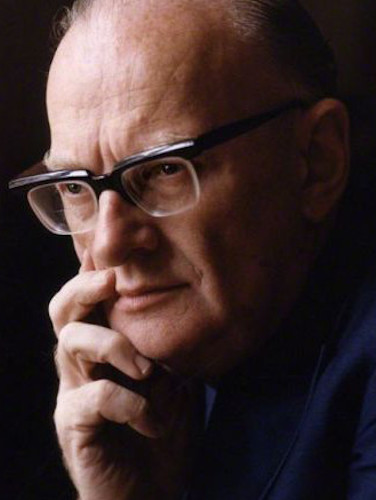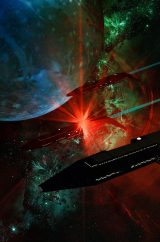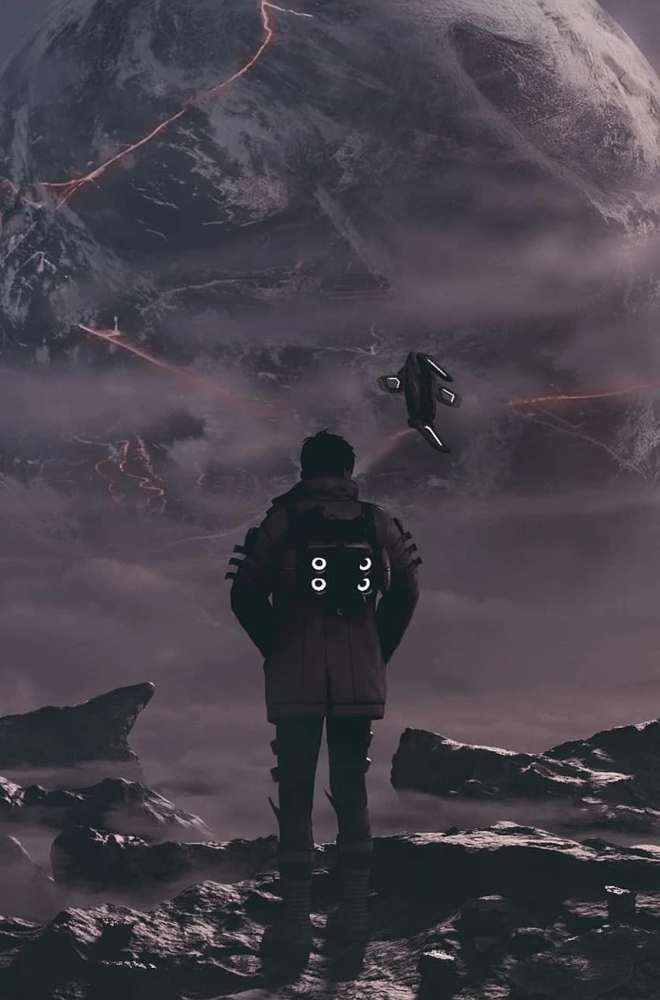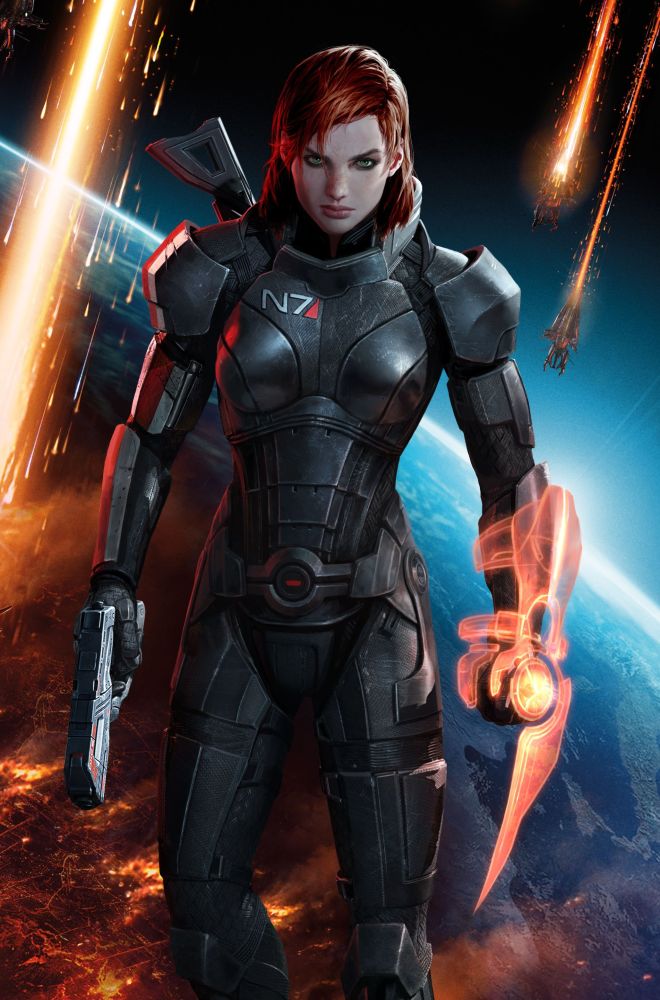 Bio
Bio
Sir Clarke was born on the 16th of December, in the year of 1917, in Minehead, Somerset, England, United Kingdom. Clarke was an English sci-fi author, an inventor, a science author, a futurist, a TV series host, and an undersea explorer.
Masterpiece
Clarke was the co-writer for the screenplay for the 1968 movie titled 2001: A Space Odyssey, which is among the greatest movies that cinema has ever known. The author was born in Minehead, Somerset, but he was brought up in Bishops Lydeard, which is rather close.
Best Arthur C. Clarke Books
| Photo | Title | Rating | Length | Buy |
|---|---|---|---|---|

|
Space Odyssey Series | 9.58/10 | 4 Books | Check Price On Amazon |

|
Rama Series | 9.52/10 | 4 Books | Check Price On Amazon |

|
Childhood's End | 9.74/10 | 224 Pages | Check Price On Amazon |

|
City and the Stars | 9.56/10 | 256 Pages | Check Price On Amazon |

|
Fountains of Paradise | 9.44/10 | 256 Pages | Check Price On Amazon |
Early Life
As just a young boy, the author resided on a farm, where he was an avid stargazer, a collector of fossils, and he has had a fondness for American sci-fi pulp stories. He attended Huish grammar school in Taunton. It was during and between the years of 1929 and 1931 that the interest in sci-fi literature reached great heights.
When only a teenager, he took part in the Junior Astronomical Association, to whose journal he contributed several different articles and stories. In 1936, he relocated to London, where he became a pensions auditor for the Board of Education. Now, with that noted, let’s see what the best Arthur C. Clarke books are.
Space Odyssey Series
 Absolute Classic
Absolute Classic
Clarke’s Space Odyssey series is the number one source for the most popular Clarke books and the best-selling Clarke books. The Space Odyssey series is also sometimes referred to as Clarke’s 2001 series or Clarke’s Odyssey series. The order of books goes as follows:
- 2001: A Space Odyssey
- 2010: Odyssey Two
- 2061: Odyssey Three
- 3001: The Final Odyssey
Civilization’s Cradle
The first novel begins with us learning about an alien race that has never been observed before. This race of aliens uses a tool that looks like a large, crystal-like monolith to explore the world of the galaxy. Accordingly, the monolith also serves the purpose of helping the many civilizations throughout the galaxy, so that each of them can advance on the path to intelligent life.
Right Direction
One such example of the use of the monolith, namely on earth, occurred three million years ago in Africa, where the monolith was placed near the dwelling and home of a group of hominids who were all famished.
The monolith’s nearness helps the starving group learn how to first use tools, which they would find quite beneficial to have once they attack a leopard. Likewise, one of the tools is used when the tribe we have been observing has a conflict with a similar tribe. What is important here is that this was the first time that humanity gazed at the great monolith, but not the last. The second time happens in the year of 2001.
To Be Enlightened
The follow-up novel to 2001: A Space Odyssey is 2010: Odyssey Two, which was instrumental in making this one of the best Clarke series of all time. 2010: Odyssey Two is a book that needed to answer many questions that one could have following what happened in the first book.
Who is responsible for our main character, Dave Bowman, transforming into a so-called Star-Child at the end of the book? Why is it that such a thing occurred and what would happen to Bowman, in his present Star-Child state?
What Really Happened?
Of course, this is only the tip of the iceberg so far as the many questions are concerned. Others include whether HAL, a supposedly state of the art, bleeding edge, highly intelligent, and allegedly stable was tinkered with when he eliminated his crew.
Could HAL have gone insane or is it that he was influenced by something? Once Bowman vanished into thin air, what happened to HAL and the spaceship? All of these questions are addressed brilliantly in the book at hand. It is one of Arthur C. Clarke’s best books.
Another Civilization’s Birth
Book number three of the series is titled 2061: Odyssey Three. The novel’s events happen sixty years following the first book. We wouldn’t be mistaken to say that all of these books are more than worthy of their spots among the best Arthur C. Clarke books.
2010: Odyssey Two concluded with the ominous extraterrestrials, the ones that had created the famed Monolith, now having transformed Jupiter into a small sun so that life on Europa, one of its moons, can begin development. Earth was warned not to land on Europa by any means.
Off Limits
The sun, or what was formerly known as Jupiter, is now known as Lucifer. The nearby moons, excluding the great Europa, are charred and burned from the proximity of the sun, while Europa has become an ocean world with genuine clouds streaking the skies.
Humanity is also in the midst of colonizing a temperate world known as Ganymede. What follows in the penultimate chapter of the series, we urge our readers to find out for themselves.
Whence They Come
The final novel in the series at hand is titled 3001: The Final Odyssey. 3001: The Final Odyssey begins a millennium following the first book. We start with the bioforms, referred to as the First-Born, which were the creators of the dark monoliths.
These bioforms came out of the so-called primordial soup and with millions and millions of years, they became a species that could travel through space. Regarding the mind and the intellect of a race as the most paramount aspect, they went through the galaxy aiding other species with the potential for intelligent development in their survival.
A Millennium Later
During the events of 2001: A Space Odyssey, among the hapless crew members that were eliminated by HAL was Frank Poole. Frank Poole, having lost his tether, drifted out into space, where he slowly creeped out of the thoughts of the many, where he froze.
However, now Frank Poole has come back to life, a thousand years later, in a world so different to his own, but with one thing that he remembers – a Monolith astir once more. A few great picks for the best-rated Clarke books out there.
Rama Series
 Another Amazing Series
Another Amazing Series
Rama is yet another great pick for the best Clarke book series. On the list of books by Arthur C. Clarke, it seems very few are as revered as the books in this series. Now, Clarke’s Rama series in order goes as follows:
- Rendezvous with Rama
- Rama II
- The Garden of Rama
- Rama Revealed
Just Entered
The first book in the Rama series by Clarke is Rendezvous with Rama. With a weight greater than ten-trillions metric tons, with a speed wholly strange and inexplicable, the celestial object which astronomers have named Rama.
It is moving through space and, now, through the solar system, with scarce signs of its slowing down. There are very few things that are known about Rama, but one of them is the following – Rama isn’t a natural object by any means.
First Contact
As they soon find out, Rama is, in fact, an interstellar spaceship, but why would it endeavor to travel so vast a space just to get to Earth?
As the first interaction between humanity and an alien race is imminent, none of the human parties are aware of what is actually at stake here, for just on the other side of an airlock door are the Ramans, but what do they bring along with them? Is it fortuitous for humanity or will it be detrimental and devastating?
Awaited Return
Rama II, the second title in the Rama series by Clarke, is a great pick for being one of the best Clarke books out there. Rama II was published in the year of 1989.
The events of Rama II happen seven-decades after what occurred during the Rendezvous with Rama. In the span of these seventy years, nothing much has happened on Earth, but when a brand-new Raman ship is seen gaining speed towards the Solar System, something great is to be expected.
Without a Leader
On Earth, a group of twelve people are chosen to find out more of the secrets and mysteries that the Ramans have, though conflicts and arguments between the members of the crew start even before they have exited Earth’s atmosphere.
As they near the Raman spacecraft, something happens that puts the leader of the Earthlings out of commission, so that they have no one to pull in one single direction. Now, the question is what lies inside of the Raman spaceship? One of the top Clarke books for a reason.
What We Know
The Garden of Rama, the third installment among Clarke’s books, is the most important novel in the series because it brings everything together so cohesively. In 2130, a wholly unknown spacecraft entered the solar system, and later on, it was known as the Rama.
The vast, bulking space ship was empty, seemingly. A few things had been discovered about the Rama, though not much in the grand scheme of things. Soon enough, the Rama departed for the next destination it had in its cosmic plans.
Towards the Unknown
Decades later, a second Rama spacecraft was seen entering into the solar system, but this time Earth was not caught unawares. Preparations had been made to ensure that the Earthlings would be able to prod deeper into the secrets that the Ramans have.
In The Garden of Rama, however, just as the Rama II is leaving the solar system, there are two men and a single woman on board. What lies before them is a dark unknown future, which, for better or worse, will bring the brand new vistas for exploration.
Getting Out
Following Clarke’s books in order as pertains to the series at hand, we come to the final book, Rama Revealed. Out of all the Arthur C. Clarke’s series, the Rama series is perhaps our favorite.
With that slight digression out of the way, we can see what is happening in the concluding chapter of the Rama series. Rama Revelation follows the tale of Nicole Wakefield and her getting out of imprisonment following the ending of The Garden of Rama.
Other Races
By this time, humanity had made contact with two different spies of extraterrestrials, namely the Myrmicats and the Octospiders. The Octospiders were simple beings until a different alien race encountered them and helped change them forever. The Octospiders were enhanced genetically until their world became a utopia.
The Myrmicats, on the other hand, are a heteromorphic species, whose last form is an intermingled mesh of sentience that could interact with humanity by means of certain fibers. What the Ramans, the Octospiders, and the Myrmicats have in store for the humans, however, we can’t say.
Childhood’s End

 Out of Nowhere
Out of Nowhere
Childhood’s End is one of those Clarke’s books that we could name as being Arthur C. Clarke’s best book and we would be making no leap of faith, at all. Childhood’s End is a book which was published in 1953, with a total of about two hundred and twenty pages.
Towering above all the cities of humanity, the Overlords came into view out of the blue, with no warning to come of their arrival or even of their existence, at all. They were, with all things considered, more developed than humanity in both the military and technological sense, thus one can surmise that their intelligence is far great, as well. Fear and dread took hold of humanity, though it soon became obvious that they weren’t evil beings.
The Price for Peace
The Overlords asked only of a few things, namely to end all war on Earth, to unify all the Earth, and to make poverty disappear altogether. With small gripes, humanity accepted, so a brilliant time began.
However, as peace grabs a hold of the world, humanity has lost its need for greatness, its desire to strive forward, but what if that is what is needed to become so technologically advanced? However, it soon becomes manifest that the Overlords have a couple of plans of their own.
The City and the Stars

 The Greatest Creation
The Greatest Creation
Taking into account the whole of the list of novels by Clarke, The City, and the Stars might be the best Arthur C. Clarke book ever. The City and the Stars is a book that was published in the year of 1956, spanning around two hundred and fifty pages, in total.
The City and the Stars is oftentimes seen as the top of all the best-reviewed books by Clarke and it is with good reason. The City and the Stars sees humanity having built something magnificent. Surely, humanity has made towns and cities before, but there is no city in all of history that can match Diaspar and its vast greatness.
What Secrets Lurk Inside
For thousands of years, Diaspar had kept its protective shield as it was able to separate the deterioration of the outer world along with all its perils out of the brilliant city’s walls. Diaspar was so mighty once, but then the invasion happened.
Now, a man bearing the name Unique is determined to get inside of Diaspar and to uncover the myths and the secrets surrounding Diaspar, the invading forces, and what truly happened. One of the best books by Arthur C. Clarke.
The Fountains of Paradise

 Great Elevator
Great Elevator
The Fountains of Paradise is among the best Arthur C. Clarke novels of all time, especially in regards to the present Arthur C. Clarke book reviews. The Fountains of Paradise was published in the year of 1979, spanning around two hundred and fifty pages.
The Fountains of Paradise begins with Vannevar Morgan, our main character, and an idea for a project that he has. The project at hand has to do with a so-called Orbital Tower, which would begin on Earth, namely from the equator, and end all the way on a satellite in the geostationary orbit. This project, if it were successful, would cut great costs that are made each time that someone goes in and out of the satellite.
Past and the Future
In the trademark manner of Clarke, namely that of making parallels between the present (or the future, for that matter) and the past, we also follow a certain King Kalidasa, who, himself, was making a great tower, thousands of years before Vannevar’s birth.
The second part of this story has to do after Vannevar Morgan has passed away, as humanity deals with extraterrestrials that have come to interact with them. Among the best books of Arthur C. Clarke, we’ve picked up.
The Songs of Distant Earth

 Amazing Novel
Amazing Novel
The Songs of Distant Earth, taking into account the entire Clarke novels list, stands as one of the best Arthur C. Clarke books that we’ve picked up. The Songs of Distant Earth was published in 1968, with a page number of mid two hundred.
Thalassa
Thalassa was once a genuinely and candidly brilliant paradise on Earth. Thalassa spanned a couple of islands in an ocean covering great parts of the world. Thalassa was also the place where a rather small colony was founded by the robot mother-ships just as the solar system’s sun had grown redder and redder and exploded in a supernova. It was at this time that humanity left the Earth in search of a home somewhere else.
Trouble Has Come
The colonies on Thalassa, however, still lived on. They were in awe of the grand and great beauty that the islands had, with its tremendous resources. What they weren’t aware of, however, was that something was happening just below the seas of the world. It is then that the so-called Magellan arrives in orbit, with trouble and problems to spare.
A Fall of Moondust

 When It Finally Popped
When It Finally Popped
A Fall of Moondust, just as much as the other Arthur C. Clarke’s novels, is deserving of its spot among Arthur C. Clarke’s best novels. A Fall of Moondust is a great book and it was published in the year of 1961, with a common Clarke page count of about two hundred, in total.
The bubble, for a lack of a better term, had been in a state of growth for about one-million or so years. Now, just below the mountains’ roots, it was getting ready to burst. Captain Harris was speaking to passengers in the front row of his boat as the ship had been left on autopilot. It was then that the first tremor took grip of the earth. It was at this point that the Earth’s bottom fell out.
In the Moon’s Grip
It seemed that the sea was animated, falling towards the Moon. The wholly terrible, fear-inducing, and mind-shattering feeling that something like this was occurring coupled with the fact that one could see a crater so large inside of the Earth, was nothing short of horrible, to say the very least.
As the dark, the silent, and the oddly calm took hold of them, they were slowly sinking into the cosmos on their way to the Moon.
A Time Odyssey Series
 Fantastic Trilogy
Fantastic Trilogy
Clarke’s Time Odyssey series is home to some of the best Arthur C. Clarke books ever. A Time Odyssey series consists of three books in total, so that these particular Arthur C. Clarke’s books ranked go as follows:
- Time’s Eye
- Sunstorm
- Firstborn
Divided Timeline
Worth noting is that the series was co-written by Stephen Baxter, as well. For unimaginable lengths of time, the Earth had been observed by the Firstborn, who came out of the primordial soup and with time to spare, developed into a space-faring race. Before anyone is aware of such a thing, Earth is subject to a carving up and it is made into a sizable puzzle, with the very planet and its inhabitants existing in separate timelines.
Secrets in the Ancient City
Here and there across the planet are placed certain silver-colored, floating orbs, which cannot be damaged by any weapon and cannot be communicated with. Whether they’re cameras to keep everything in line or they’re the bases for the timeline-hijinks that are currently happening, the humans can’t reason exactly. An answer to the many questions that they have, however, might exist in the cradle of humanity, the city of Babylon.
The Nine Billion Names of God

 Mesmerizing
Mesmerizing
The Nine Billion Names of God is a fantastic, brilliant, and mesmerizingly inventive book that was published way back when in the year of 1967. The Nine Billion Names of God has a page number of about two hundred and forty, a staple-length, it seems, in the fiction of Clarke.
Tales Inside
The Nine Billion Names of God is a collection of stories, which were written by Clarke in his earlier days, but which are honestly some of his greatest, most significant works, even to this day. The stories that are contained inside of the book at hand are the eponymous story, The Nine Billion Names of God, then Trouble With Time, The Possessed, Encounter at Dawn, No Morning After, and The Sentinel.
What to Expect
Featuring Clarke at his seemingly most creative, the stories herein have premises like the following – in one story, the gods of the Universe have come down to Earth; in another, one is free to do all that he wants. All because tomorrow the morning will be lacking, then we even have the tale that inspired the creation of the best Arthur C. Clarke novel, 2001: A Space Odyssey. The book is more than worth your time.
The Light of Other Days

 Forget About Privacy
Forget About Privacy
The Light of Other Days is a book that was published in the year of 2000, spanning nearly four hundred pages. It was co-written by Stephen Baxter, as well. The Light of Other Days sees a truly genius and ambitious industrialist as he has come up with one great plan.
He uses the brilliance of quantum physics and mechanics so that people all over the world can always see each other. There is no wall, there is no corner, there is no window, and there is no fortress that can hide people from the invention at hand.
Peer Into the Past
As such, the most secretive, surreptitious, most private, most intimate, moment of man can be said goodbye to, seeing as the notion of privacy, even if it’s the most sacred human privacy, is thrown out of the window.
However, soon enough, this same manner of technology is developed even further and now it can even see things into the past, too. A brilliant tale from Clarke that we can’t recommend just enough. Imperial Earth is a book that we think our readers will love and appreciate, too.
Robert Hazley
Robert is a science fiction and fantasy geek. (He is also the best looking Ereads writer!) Besides reading and writing, he enjoys sports, cosplay, and good food (don't we all?). Currently works as an accountant (would you believe that?)





